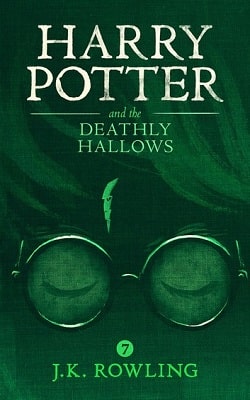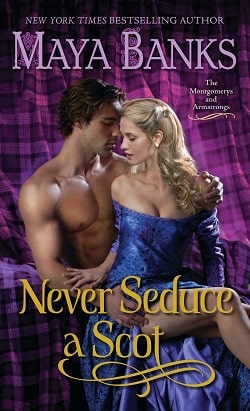Fifty-Seven
WASHINGTON, D.C.
Rapp rarely thought of his job in terms of love or hate. It was a vocation, a duty, and not something that was easily affected by his moods, good or bad. There was only commitment to a cause in which he truly believed. There were, however, aspects of his job that he did not enjoy and increasingly took steps to avoid. One of them was coming to the White House.
For starters, Rapp and the president's chief of staff could barely tolerate each other. She was an impediment to every strategy or action he tried to advise the president on. The fact that politics weighed so heavily in every decision simply did not compute for Rapp. It should not have come as a surprise to him that in a town like Washington and in a place like the White House, politics played such an important role but, in an irritating and undermining way, it did.
Add to all of that a convoluted, misguided, and rabid political correctness that permeated nearly every meeting, and you were left with an environment in which the inconsequential was debated and dissected, and the issues of real importance were obfuscated and put off for someone else to deal with at a later date. It was not the type of place where a man of action felt at ease, but it was nonetheless where Mitch Rapp found himself on this Thursday morning in May, sitting in the Cabinet Room with a painting of Teddy Roosevelt appropriately looming over his shoulder. His surly mood had not abated, but for Irene's sake he was working to conceal it. All but four of the eighteen leather chairs were occupied. The national security team was assembled and waiting on their commander in chief to join them.
President Hayes entered with a smile on his face and a jovial bounce to his step. Everyone immediately stood, even Rapp, though he didn't feel like it. As the president walked past him, he squeezed Rapp's shoulder as a sign of his gratitude. So far he had not had the chance to thank him personally.
Hayes continued around the table to his chair that was positioned facing portraits of Lincoln and Jefferson. Chief of Staff Valerie Jones, never far from her master, took the vacant chair to the president's right. The thought occurred to Rapp, not for the first time, that it would have been more fitting for her to be seated on his left. Attorney General Stokes entered next and was followed by a tall blonde who Rapp assumed was this Stealey woman McMahon had told him about. So intense was Rapp's resentment of this woman that he failed to notice her obvious beauty. The Department of Justice officials took their seats opposite the president and then everyone sat.
Rapp had watched part of the press conference in Kennedy's limo and it was obvious that Attorney General Stokes was riding high on the accolades he'd received from the president. After National Security Advisor Haik announced the agenda, Paul Reimer from the Department of Energy took over.
Holding a yellow legal pad in his hands the man in charge of the Nuclear Emergency Support Teams began on a very sober note by saying, "Our scientists have concluded that if the various components that we intercepted had actually been assembled, the device would in fact have obtained a yield in the twenty-kiloton range." Reimer cleared his throat and added, "A nuclear weapon of that size would have destroyed the capital and killed over a hundred thousand people in the initial burst. In the following month that number would double due to the radiation effects."
A morbid silence fell over the meeting. Somewhat used to dealing with these scenarios strategically, General Flood was the first to move on. "Have you figured out where this thing came from?"
"That's the million-dollar question," replied Reimer. "Twenty KT is not significant by nuclear bomb standards, but by no means is it small. Attribution for the special nuclear material could take up to six months, but there are certain design geometrics that lead us to believe the weapon is of Soviet origin."
The president sensed there was more. "You sound a little shaky in your assessment."
"We have a slight disagreement among several of our scientists at the moment, but we're ninety percent confident that the weapon is in fact Soviet made."
"What's the other ten percent saying?"
"There is a slight possibility that it is one of the Pakistanis' early prototype designs."
The president looked at his secretary of state, briefly, and then back at Reimer. "Based on some of the intelligence we've already gathered I would be inclined to think the chances of this thing being Pakistani would be much higher."
"It's that intelligence, sir the missing scientists in particular that is causing us to leave the door open on the Pakistani issue. From a purely scientific standpoint, we are very confident that it's Soviet."
"Why?"
Reimer looked at the other attendees before answering, and then turned his attention back to the president. "As I said, it will take us six months to figure out exactly where this material originated, to finger-print, in other words, the exact reactor where the SNM was made, but that is not the only way to identify the origin. The other method is through design analysis. At first we were thrown by this weapon. We'd never seen anything like it, which led us to believe that it was possibly an early Pakistani design that we knew nothing about. This was where the minor dissent, if you will, originally started. With the design.
"We ran the design through the computers and came up with nothing. Typically weapons with yields in the ten to twenty range tend to be designed for torpedoes, cruise missiles, or artillery shells. This weapon does not fit that design geometry profile. We were running out of ideas when one of our senior scientists remembered a series of tests that the Soviet Union conducted during the late sixties and into the mid-seventies."
Reimer flipped through a thick file and asked, "How many of you are familiar with the Kazakh test site?"
General Flood and Director Kennedy were the only two people who raised their hands.
Reimer held up a map. "The Kazakh test site is located in western Kazakhstan on the northern edge of the Caspian Sea. From 1949 to roughly 1990 the Soviets conducted 620 known nuclear explosions at this site. That is approximately two thirds of all Soviet tests. Over 300 megatons of nuclear weapons were exploded at this one range alone. To put that into perspective, that's the equivalent of roughly 20,000 Hiroshima bombs and nearly twice the amount of all U.S. tests."
Rapp only heard the first part. His mind fixed on it. He leaned forward in his chair and raised his hand to get Reimer's attention. "Paul, you said this test site is located on the northern edge of the Caspian."
"That's right."
"You might be interested to know that when we raided the al-Qaeda camp in Pakistan one of the things we found was a map of the Caspian region."
Reimer's thick eyebrows arched in surprise. "Could you send it to me when we're done?"
"Absolutely."
Reimer jotted a quick note and then continued saying, "From the late sixties to the mid-seventies the Soviets tested a series of atomic demolition munitions. ADMs. We don't know a lot about these because they were not designed for military purposes."
"Then what were they for?" asked the president.















